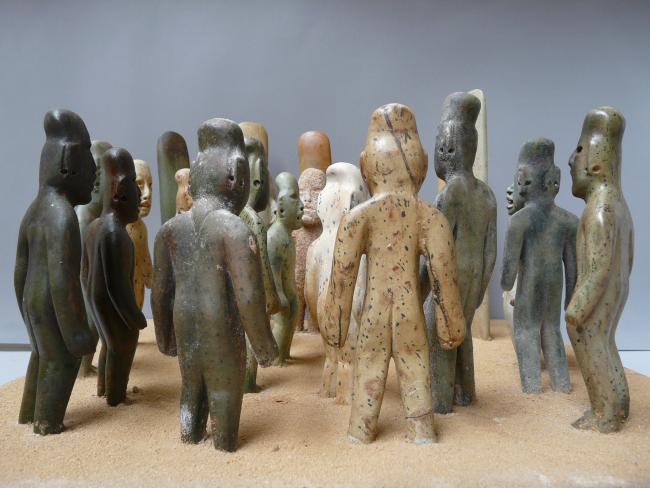
Green Stone
Sala
The Olmecs of La Venta offered more than three thousand jade objects within their ceremonial precinct, most of them dating from between 800 and 600 BCE. These offerings included sets of chisels and votive axes, anthropomorphic and zoomorphic figurines, beads, earspools, pendants, discs, perforators, as well as miniature jade vessels and canoes. Some of these items were part of burial offerings found in tombs and cists, often accompanied by magnetite mirrors, ceramic vessels, obsidian, and objects carved from rock crystal.
The Massive Offerings, in which up to a thousand tons of serpentine blocks were buried, are unique in the pre-Hispanic world. The most elaborate examples feature mosaics with abstract designs and date to around 900 BCE. While their precise meaning remains open to interpretation, the most widely accepted theory is that they were offerings to Mother Earth.
Portable Olmec greenstone objects have been found across much of ancient Mesoamerica. Their sacred value was apparently recognized not only by the people of La Venta but also by neighboring cultures. These objects have been discovered in Maya and Mexica offerings over a thousand years after they were made, serving as the clearest evidence of the lasting reverence pre-Hispanic cultures had for Olmec jade.


